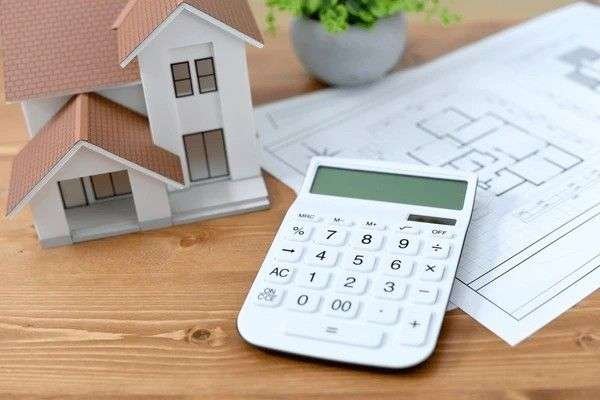Building a custom home is a dream for many, but it often comes with the daunting perception of high costs. However, with careful planning and strategic decision-making, it’s possible to build a custom home without breaking the bank. Here, I’ll share my experience and insights on how to build a custom home on a budget.
Table of Contents
Understanding Your Budget
Setting a Realistic Budget
The first step in building a custom home on a budget is understanding what you can afford. I started by setting a realistic budget that considered my savings, potential loans, and other financial resources. It’s essential to include a buffer for unexpected expenses, which are almost inevitable in any construction project.
Prioritizing Needs Over Wants
While it’s tempting to include every luxury in your custom home, I found it crucial to distinguish between needs and wants. Prioritize features that are essential for your lifestyle and well-being. For instance, energy-efficient windows may cost more upfront but save money in the long run through reduced utility bills.
Planning and Design
Choosing the Right Architect
Hiring an architect who understands your budget constraints is key. I worked with an architect experienced in designing cost-effective homes. We focused on a simple yet functional design that minimized unnecessary complexities and costs.
Opting for a Smaller Footprint
A smaller home can significantly reduce construction costs. I chose a compact design that maximized the use of space. Smaller homes are not only cheaper to build but also more affordable to maintain. Consider open floor plans to make smaller spaces feel larger and more connected.
Simplifying the Design
Elaborate architectural features can quickly inflate costs. I opted for a straightforward design with a simple roofline and minimalistic details. Avoiding complex shapes and extravagant finishes helped keep the budget in check.
Materials and Labor
Using Cost-Effective Materials
Material selection plays a significant role in controlling costs. I researched and chose durable yet affordable materials. For instance, I used vinyl siding instead of more expensive wood or brick. Look for materials that offer a good balance between cost and longevity.
Purchasing Materials Wisely
Buying materials in bulk or during sales can result in substantial savings. I took the time to compare prices from different suppliers and waited for seasonal discounts. Negotiating with suppliers also helped reduce costs.
Hiring Skilled but Affordable Labor
Labor costs can be a major expense in any construction project. I sought recommendations for reliable yet affordable contractors. It’s crucial to check their previous work and references to ensure quality without overspending.
DIY Where Possible
Taking on some tasks yourself can save a significant amount of money. I handled painting, landscaping, and minor interior work. While it’s important not to overestimate your skills, DIY projects can be rewarding and cost-effective.
Energy Efficiency and Long-Term Savings
Investing in Energy Efficiency
Energy-efficient homes may have higher initial costs but offer long-term savings. I invested in good insulation, energy-efficient windows, and solar panels. These features reduced my utility bills and made the home more sustainable.
Exploring Green Building Options
Using eco-friendly building practices can sometimes reduce costs. For example, I used reclaimed wood for some interior finishes, which was cheaper than new materials and added a unique character to my home.
Financing and Incentives
Exploring Financing Options
Finding the right financing options is crucial. I compared different mortgage rates and terms to find the best deal. Some banks offer special loans for eco-friendly homes, which can come with lower interest rates.
Utilizing Government Incentives
Many governments offer incentives for building energy-efficient homes. I researched and took advantage of these programs, which helped offset some of the construction costs. Check for grants, tax credits, and rebates that might be available in your area.
Monitoring and Managing Costs
Keeping Track of Expenses
I maintained a detailed log of all expenses throughout the construction process. This helped me stay on budget and identify any areas where costs were escalating. Regularly reviewing your budget and expenses is crucial to avoid overspending.
Avoiding Last-Minute Changes
Changes in design or materials during construction can lead to significant cost overruns. I made sure all decisions were finalized before starting the build. Sticking to the plan helped avoid unnecessary expenses and delays.
Regular Communication with Contractors
Clear and regular communication with contractors is essential. I held weekly meetings to discuss progress, address any issues, and ensure the project stayed on track. Being proactive helped prevent misunderstandings and costly mistakes.
The Emotional and Practical Journey
Managing Expectations
Building a custom home on a budget requires managing expectations. While it’s important to have a vision, I found it equally crucial to be flexible and realistic. Compromises are part of the process, and keeping the end goal in mind helped me stay positive.
Enjoying the Process
Despite the challenges, building your own home is an exciting and fulfilling experience. I made sure to celebrate small milestones and enjoy the journey. Seeing the house take shape, knowing I was creating a home within my means, was incredibly rewarding.
Conclusion
Building a custom home on a budget is achievable with careful planning, strategic decision-making, and a bit of creativity. By setting a realistic budget, prioritizing needs, choosing cost-effective materials, and managing expenses, you can create a beautiful and functional home without overspending. My journey taught me that with patience and perseverance, you can turn your dream of a custom home into reality without breaking the bank.





